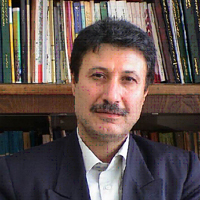Explanation of the spatial organization of the settlement system with an emphasis on the role of the oil industry in the Case study of Khuzestan Provinc
The present study is aimed at explaining the spatial organization of the Khuzestan province system Settlement with emphasis on the role of oil. Oil has been the primary mechanism of formation of the Khuzestan Space organization for the last hundred years and has influenced other mechanisms. It is seen primarily as urbanization and polarization of population and activity. In the analytical field, firstly, using the spatial organization analysis models such as the class difference model and the nearest neighborhood model as well as the first urban indicators, the spatial organization of Khuzestan province is examined, and then to measure the impact of oil on the spatial organization. Housing System of Khuzestan Province Indicators their spatial distribution maps were prepared and analyzed in the form of three selected economic, social and physical variables. A system of information flows and communications and services and population movements under the influence of state bureaucracy have divided the province into the eastern and western or the oil and non-oil divisions. Spatial disequilibrium patterns in the Khuzestan province's oil-affected Settlement system in urban areas, severe imbalances in urban hierarchies, the weak role of middle cities, and thus the concentration of services commensurate with the distribution of deprived and marginalized populations of marginal and marginal cities. The spatial balance in the villages is the emptying of the villages in the eastern half of the province and the concentration of large villages in the western half.
-
Examining the Compatibility of Green Infrastructure with Urban Land Use, Case Study: Abbasabad Lands of Tehran
Sara Allah Gholipour, *
Journal of Urban Ecology Researches, -
Explaining the Scenarios of Establishing a Smart City Based on Internet of Things in Mashhad Metropolis
Aliakbar Anabestani *, , Nasim Niknami
Geography and Territorial Spatial Arrangement, -
An analyzing the distribution pattern of land uses in learning cities with spatial justice approach (Case Study: Zanjan City)
, Hossein Tahmasebi Moghadam, Bahareh Akbari Monfared*
Journal of Applied Researches in Geographical Sciences, -
A Comparative Study of Population Growth Indicators in Iranian Cities and Their Geographical Neighbors
Keramatolah Ziari *, Samin Yousefi
Journal of Urban Economics,



